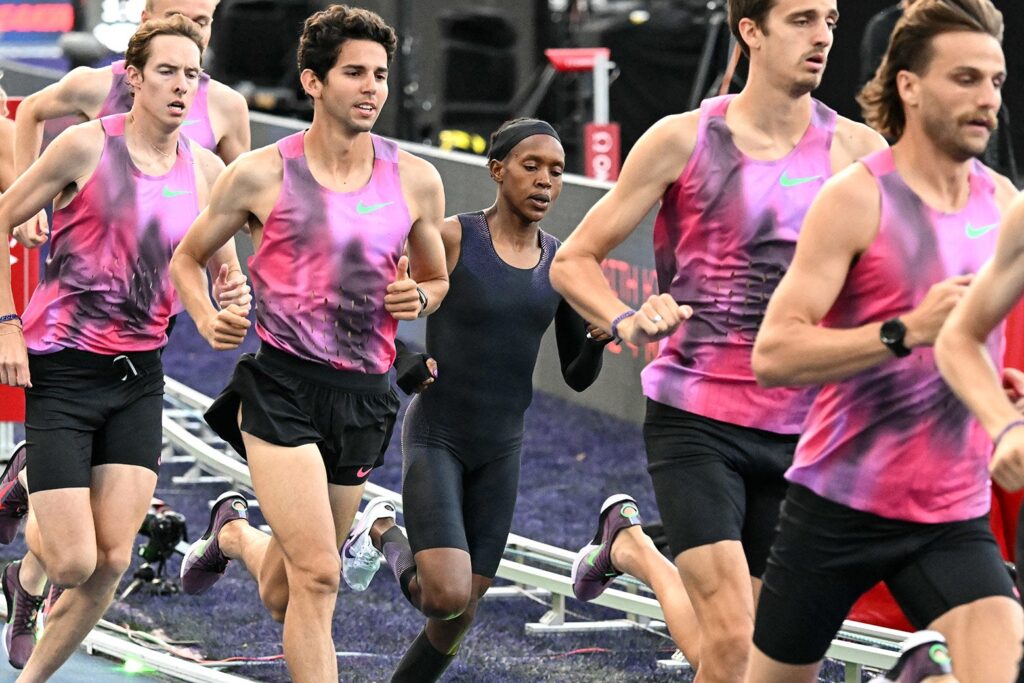
PARIS – Faith Kipyegon attempted to achieve an unprecedented milestone in women’s athletics by running a mile in under four minutes. Despite the anticipation, the record-breaking moment did not materialize, revealing the complex interplay between marketing hype, media narratives, and scientific interpretation.
Immediate Impact
On Thursday, Kipyegon sought to accomplish what no woman has done before. The event, heavily promoted as a breakthrough for women’s sports, ended without the desired outcome. However, the attempt itself became a fascinating case study in how expectations can be shaped and sometimes distorted.
Key Details Emerge
Earlier this year, a scientific study posited that Kipyegon might run a mile in 3:59.37, provided she had perfect drafting conditions. The study’s assumptions included flawless running conditions and ideal mathematical scenarios, requiring Kipyegon to match her peak fitness level when she set the women’s mile world record of 4:07.64 in 2023.
4:07.64 – Faith Kipyegon’s world record mile time in 2023.
Despite the study’s cautious optimism, media coverage and a Nike-sponsored PR event painted a picture of imminent success, suggesting Kipyegon was on the brink of a historic achievement with the aid of cutting-edge gear.
Industry Response
The media frenzy and Nike’s marketing campaign created an inflated sense of possibility. Notably absent from the narrative was a more conservative analysis published in April, co-authored by a Nike scientist, which indicated that a sub-four-minute mile was not immediately feasible.
“Current data are insufficient to suggest that a sub-4 minute mile is imminent.” – April study
This study, which did not feature in Nike’s promotional materials, highlighted the statistical improbability of the feat, underscoring the gap between marketing and reality.
By the Numbers
Kipyegon improved her personal best by 1.2 seconds, finishing at 4:06. However, she needed to shave more than six seconds to achieve the sub-four milestone. In elite running, where victories are often decided by fractions of a second, this disparity was significant.
1.2 seconds – Improvement on Kipyegon’s personal best.
Background Context
The attempt was framed as a historic campaign rather than a personal best pursuit. Nike’s portrayal of Kipyegon as “brave” for chasing an unlikely target raised questions about the portrayal of women’s sports and the potential for patronizing narratives.
Expert Analysis
Nine-time Olympic gold medalist Carl Lewis commented during the broadcast, “Sometimes you have to change the rules for people that are special.” While intended as praise, it inadvertently suggested that women’s achievements require exceptions, overshadowing Kipyegon’s genuine accomplishments.
What Comes Next
The fallout from Kipyegon’s attempt underscores the need for a balanced approach to scientific studies and marketing in sports. As the public reflects on the event, the focus may shift towards respecting the actual achievements of athletes rather than inflated expectations.
The narrative highlights a broader issue within sports: the tendency to measure women’s success against male standards. As Kipyegon continues her career, the hope is that her genuine talents and accomplishments will be celebrated without the burden of unrealistic expectations.







